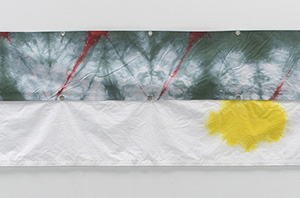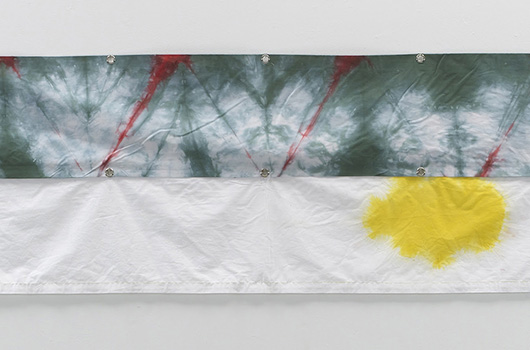
Richard Tuttle came to prominence in the 1960s, combining sculpture, painting, poetry and drawing. He has become revered for his delicate and playful approach, often using such humble, everyday materials as cloth, paper, rope and plywood. For this project, Tuttle has taken as his starting point one of the unsung heroes of everyday life: textiles.
Textiles are commonly associated with craft and fashion, yet woven canvas lies behind many of the world’s most acclaimed works of art and textiles are of increasing interest to artists today. “I Don’t Know, Or The Weave of Textile Language” investigates the importance of this material throughout history, across Tuttle’s remarkable body of work and into the latest developments in his practice.
The exhibition will run Oct. 14 through Dec. 14.
The Whitechapel Gallery presents a major exhibition surveying Richard Tuttle’s career from the 1960s to today. He is renowned for being one of the first artists to make the radical gesture of taking the canvas off the stretcher and hanging it directly on the wall in works such as Purple Octagonal, 1967, as well as making provocative sculptures such as Third Rope Piece, 1974, the intimate scale of which directly responds to traditional ideas of monumental art.
Showcasing works selected in close dialogue with the artist the exhibition centers on his use of fiber, thread and textile and offers a fascinating introduction to Tuttle’s influential body of work. The exhibition will include Looking for the Map 8, 2013-14, a new work shown in the UK for the first time on display alongside works made in situ by the artist such as the remaking of the key sculpture Ten Kinds of Memory and Memory Itself, 1972 as well as international loans from museums and private collections.
Rather than displaying the works chronologically, the artist will instead position works in a formal relationship to each other and in direct response to the architectural framework of Whitechapel Gallery’s historic exhibition spaces. A concern with color, line and movement runs through Tuttle’s intuitive presentation which will occupy both ground and first floor galleries, featuring works ranging in scale from the intricate series of Section, Extension wall pieces to the 3-meter-long floor-based sculpture Systems VI, 2011.
Alongside this exhibition, Tate Modern will present a newly commissioned sculpture in its iconic Turbine Hall from Oct. 14 to April 6. Principally constructed of fabric, it will be the largest work ever created by the artist, measuring over 12 meters in height. It will bring together a group of specially made fabrics, each of which combines natural and man-made fibers to create different textures in bright colors. These will be suspended from the ceiling as a sculptural form, contrasting with the solid industrial architecture of the Turbine Hall, to create a huge volume of joyous color and fluidity.
A new book will be published as part of this project, drawing on Tuttle’s knowledge as a longstanding collector of textiles from around the world. It will include contributions by the artist and new essays by Magnus af Petersen, chief curator, Whitechapel Gallery and Achim Borchardt-Hume, head of exhibitions, Tate Modern. The publication will bring together photographs of Tuttle’s personal collection of textiles, images of works from the Whitechapel Gallery exhibition, and documentation of the sculpture at Tate Modern.
Richard Tuttle was born in New Jersey in 1941 and now lives and works between Maine, New Mexico and New York. His work is held in major private and public collections around the world and recent retrospectives have been held at the San Francisco Museum of Modern Art; the Whitney Museum of American Art, New York; the Museum of Contemporary Art, Chicago and the Los Angeles Museum of Contemporary Art.
ADDITIONAL IMAGE OF NOTE


